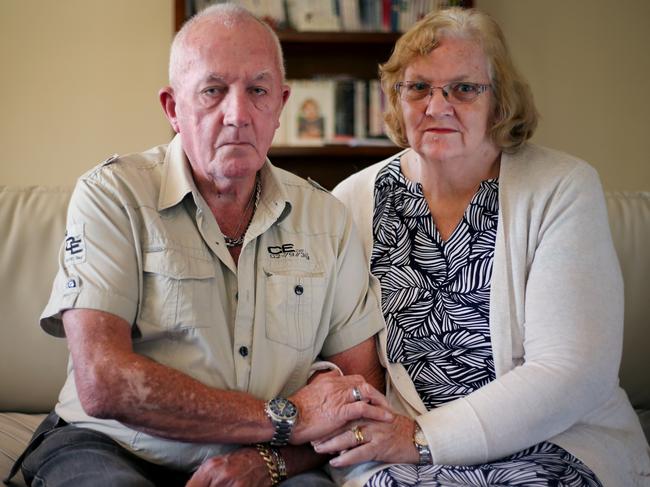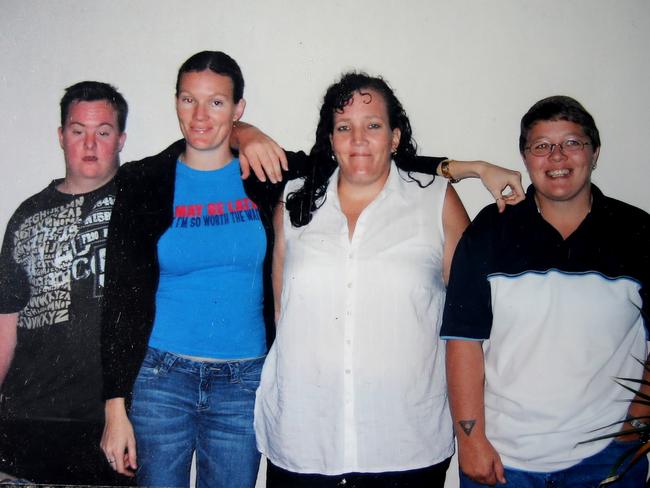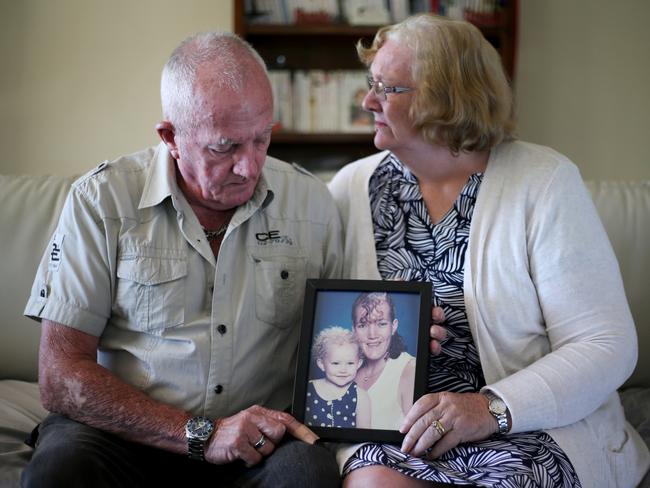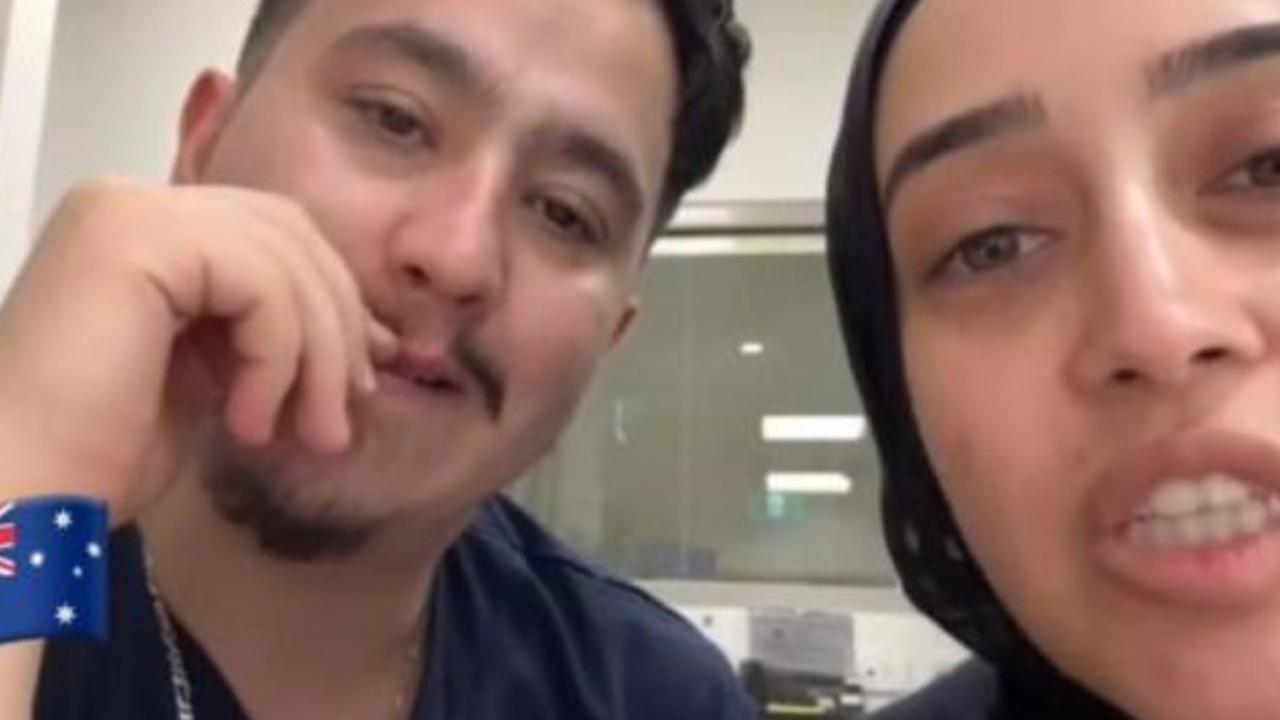Drug overdoses: 2070 Australians died in heartbreaking crisis
A new report has shown more than 2000 Australians died from a hidden but preventable drug crisis in 2018 – and more than 500 of those deaths were in NSW. Read how the lives of one family were torn apart.

NSW
Don't miss out on the headlines from NSW. Followed categories will be added to My News.
- ‘I don’t want someone to take their life because of rugby league’
- What you get as a Daily Telegraph subscriber
When Heather Fotiadis was found dead by her teenage son after an accidental overdose of prescribed drugs, she became one of 2000 overdose deaths in 2015 – and nothing’s changed since.
A Coroner’s inquest into the 43-year-old’s death found in 2017 that she died from mixing 10 different prescribed opioids given to her to relieve the pain from a car accident in her youth.
Every year from 2014 until 2018 about 2000 Australians have died preventable deaths due to drug overdoses, new research from the Penington Institute showed.

The Australians Annual Overdose Report 2020 showed that 2,070 Australians died from an overdose in 2018, and more than 500 of those deaths were in NSW.
Accidental overdoses accounted for more than 75 per cent of all overdose deaths and opioids (including legal and illicit) were the most common drug group in those cases.
For the first time since 2003, more Australians died of overdoses involving heroin than from some of the pharmaceutical opioids commonly prescribed by doctors.
The data also revealed key risk groups including men who were almost three times as likely as women to suffer an accidental overdose while Indigenous Australians were at almost three times the risk as non-Indigenous Australians.
MORE NEWS:
Notorious Aussie terrorist dubbed ‘DIY Jihadi’ released from jail
Albo’s gas gaffe reveals ALP divide
‘Ignore red herrings’: Jury told at slain bikie Hawi’s murder trial
From 2011 to 2018, the rate of unintentional overdose deaths in rural and regional Australia increased by a mammoth almost 16 per cent while the rate in capital cities increased by 3.6 per cent.
Ms Fotiadis’s father Mike Martin said he is heartbroken that many Australians continue to die from the tragedy.
“The inquest (into Heather’s death) found that there was not enough being done to monitor the amount of prescriptions and opioids she was given. The inquest found it was a “preventable death” and had the systems been in place to monitor it … she would still be here,” Mr Martin told The Daily Telegraph.

“We have a son who has down syndrome and he misses her the most. He says, “Sissy gone”. It’s frustrating to see that the numbers (of death from overdosing) haven’t gone down in five years.
“(People will argue) that it is Heather’s fault partially for taking more prescription drugs and going to the other doctors but hang on, say you were on all these drugs from the doctors for a year, how are you going to feel? Of course, you’ll want them.”

Mr Martin said a service like the real-time prescription monitoring — which is currently planned to be rolled out nationally by the end of the year – would have saved Heather’s life.
Penington Institute chief executive John Ryan said the federal government needs to make this “hidden crisis” a priority but the timeline for the monitoring service needs to be better.
“Over 400 more Australians die of unintentional overdoses than on the roads every year – and the gap is widening. Concerted campaigning, investment in evidence-based policies and community education has done a great job of bringing down the road toll. We must tackle our overdose crisis in the same way,” he said.
Mr Ryan called on the government to commit to a National Overdose Prevention Strategy, expand the pilot of Take Home Naloxone program which creates widespread access to overdose reversal drug Naloxone, and to be “realistic” about the timeline for the real-time prescription monitoring service that has been planned.

He added that it is crucial that other support mechanisms are put in place before the implementation of the monitoring service to ensure people addicted to legal opioids do not turn to illicit substances.
Rehabilitation charity Ted Noffs Foundation operations chief Mark Ferry said more treatment options need to be put in place for those struggling with legal and illegal addictions.
“Every single drugs and alcohol rehab has a waiting list. Right now, the lists are massive because due to COVID – the ability to take people in is really limited,” he said.
“We can’t have a rehab in every town but there could be a lot more focus on regional areas. We have a rehab here in Sydney and we see it in the people we get from the bush. They have to cope with being in a big city let alone all the withdrawals from the drugs.”
Originally published as Drug overdoses: 2070 Australians died in heartbreaking crisis



